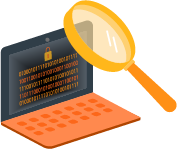In 2025 and beyond, cybersecurity shouldn’t be seen as just another challenge. It’s a core pillar of every successful business (both in the public and private sectors), strengthening fortifications while enhancing efficiency and overall performance.
The tools and technologies that businesses use are constantly evolving, helping organizations from a diverse range of sectors unlock new benefits, edge past competitors, and keep customers happy. However, it’s important to remember that the tools that malicious actors use are also evolving at rapid speeds, which means businesses need a bulletproof and cutting-edge cybersecurity program.
Everyone from multinational companies to small and medium businesses needs to take cyber risk management seriously. With a high-octane threat landscape to reckon with, along with numerous regulatory obligations, cybersecurity efforts can potentially overwhelm businesses.
The key to success when it comes to protection against cyberattacks and other emerging threats is having a strong cybersecurity strategy in place. In this article, we’ll provide guidance on how to develop a cybersecurity strategy capable of mitigating today’s biggest cyber threats.
Why is a Cybersecurity Strategy So Important?
Having a bulletproof cybersecurity strategy is crucial because most companies have shifted to highly distributed and dynamic cloud environments made up of diverse services from a broad range of providers. Put simply, today’s IT setups are more advanced and operate at a quicker pace than ever before. They are also susceptible to new kinds of cybersecurity risks.
Additionally, in the past, cyber incidents didn’t occur as often as they do now. But the increased frequency of cyber incidents doesn’t mean the potential damage is any less. The average financial damage from a single security breach in 2024 was $4.88 million for enterprises, as uncovered in IBM’s research.
A strong cybersecurity plan isn’t optional—let’s look at why it’s so important.
Advanced attacks
Threat actors are using artificial intelligence (AI) and other sophisticated methods to launch a barrage of malware, ransomware, social engineering attacks, supply chain attacks, and more, which may cause security breaches and instances of noncompliance.
Reputational risk
Cybersecurity incidents that compromise sensitive data or lead to regulatory violations can severely damage an enterprise's reputation with both peers and customers.
Competitive markets
Cybersecurity incidents can lead to downtime, disruptions, and an exodus of customers. In today’s highly saturated markets, most companies can’t afford to lose that much steam. Small and medium businesses, in particular, may struggle to bounce back from security incidents.
Complex compliance requirements
As digital ecosystems become more and more advanced, regulators and supervisors are introducing new legislation and compliance obligations. As more businesses integrate AI, they’re required to adhere to frameworks like the EU AI Act. Cybersecurity failures could lead to serious compliance violations and exorbitant fines.
New technologies
Companies are using new technologies like AI, machine learning (ML), internet-of-things (IoT), cloud computing, 5G connectivity, and even preparing themselves for breakthrough moments in quantum computing. The result? There are more attack vectors (potential entryways to your enterprise IT environments) and vulnerabilities that threat actors can exploit.
Lack of cybersecurity skills
When it comes to cybersecurity skills, the demand is far greater than the supply. Not too many businesses have strong in-house cybersecurity capabilities, which underlines the need for an intricate and well-planned cybersecurity strategy.
Developing a Cybersecurity Strategy: A Step-by-Step Guide
As cyber threats and compliance obligations mount, businesses need to create a strong cybersecurity plan. Gone are the days when antivirus software and a couple of security training seminars were sufficient. Now, a security strategy needs to be advanced and include a mix of security policies, technical capabilities, best practices, and personnel.
Confused about how to go forward with your cybersecurity strategy? Here are some concrete actions you can take to get started.
1. Evaluate Your Current Cybersecurity Posture
It’s impossible to develop an effective cybersecurity strategy without knowing your current cybersecurity posture. By knowing what your existing security posture looks like, you can better optimize mitigation strategies, response plans, and more.
Next steps:
- Scan your IT environments and catalog each asset you encounter. We’re talking about data, databases, digital identities, information systems, endpoints (laptops, phones, printers), and AI resources.
- Double-check your existing access controls for all these resources. At this stage, it’s all about clarity: Who has access privileges to what digital resources, and is that access truly necessary?
- Leverage AI-driven scanning tools to conduct thorough security assessments of your digital environments. This will give you a sense of what security gaps you need to bridge.
- Determine your compliance obligations and assess how well you're meeting them. Your compliance requirements will depend on your industry, region, and use cases.
- Analyze forensics from previous security incidents and data breaches to see which vulnerabilities or misconfigurations were exploited in the past. This will also provide insights into what kind of cybersecurity threats you need to prepare for in the future.
- Record all your discoveries in risk assessment reports.
2. Define Your Cybersecurity Goals
Once you’ve inventoried your digital assets and identified strengths and weaknesses, it’s important to establish the objectives of your cybersecurity strategy. These goals can’t address security in isolation. Instead, they must acknowledge and address overarching business goals, compliance obligations, and technology adoption plans.
Here’s what you need to do:
- Define the core results you want your cyber risk program to produce. For some enterprises, this may be reducing service disruptions and downtime. For others, it may involve optimizing threat detection and incident response.
- Identify your exact compliance requirements because your cybersecurity strategy will have to directly address those needs. For example, the cybersecurity strategy of a healthcare organization will have to focus on HIPAA compliance.
- Ensure that your cybersecurity goals don’t just focus on the immediate future. Instead, have a roadmap with 1, 3, and 5-year goalposts.
3. Select a Modern Cybersecurity Framework
Instead of approaching cybersecurity in a haphazard manner, a cybersecurity framework can help you systematically implement digital fortifications and cybersecurity best practices.
Here are some cybersecurity frameworks you can choose from:
- National Institute of Standards and Technology (NIST) CSF 2.0: Based on an Executive Order named "Improving Critical Infrastructure Cybersecurity", this popular framework breaks down cybersecurity into 6 important components: Identify, Protect, Detect, Respond, Recover, and Govern.
- ISO/IEC 27001 and 27002: These certifications demonstrate alignment with trusted, globally accepted cybersecurity protocols. Typically, an ISO certification is proof that an enterprise is doing the right things to protect its information technology (IT) systems.
- Health Insurance Portability and Accountability Act (HIPAA): This is a framework that zeros in on safeguarding health data across electronic environments and information sharing systems.
- Federal Information Security Management Act (FISMA): FISMA is a framework aimed at federal government organizations to establish cyber defenses and secure sensitive information.
- Critical Security Controls (CIS) Controls: This is a collection of 18 security practices that organizations can use to enhance their cybersecurity program.
- General Data Protection Regulation (GDPR): This framework includes rules that focus on the management of sensitive information of EU residents.
In addition to these frameworks (and a few others like SOC 2 and PCI DSS) and benchmarks, businesses have the option of mixing and matching elements from them to craft an enterprise-specific cybersecurity framework.
4. Analyze Your Tech Stack
Outdated, misconfigured, and dormant technologies are some of the biggest security vulnerabilities. Siloed security tools are another major security risk, which is why it’s imperative to conduct a complete analysis of your existing tech stack.
Next steps:
- Ensure that you have strong lifecycle management protocols in place. This will help mitigate risks associated with end-of-life technologies. This will also help curb software bloat, an exploitable phenomenon that involves excess software, non-optimal applications, or software that demands more advanced hardware.
- Make sure that all your devices, from computers and laptops to printers and scanners, have the most recent security updates. If you’re running large-scale IoT machinery, then it’s equally important to ensure that those smart devices and machines are hardened, updated, and optimally configured to mitigate high-risk issues.
- Plan to introduce AI-driven automation capabilities wherever possible to address gaps posed by legacy tech.
- Make sure that your existing tech stack doesn’t have any major integration limitations. That’s because your security tools need to seamlessly operate across diverse tools and technologies, and integration hurdles can complicate security and performance.
5. Update Security Policies and Employee Protocols
By this stage of your cybersecurity strategy development process, you’ll have a strong idea of what kind of security policies you need to implement. In addition to policies, introducing strict employee protocols is a good way to protect yourself from insider threats and employee errors. Examples of employee protocols include structured playbooks to deal with social engineering attacks and incident response and reporting protocols.
You can shape your security policies with the help of methodologies like zero trust. Principles like least privilege and just-in-time access can be immensely useful aspects of your policies.
Below are some of the most important security policies you need to have in place:
- Acceptable Use Policies (AUP): Outlines how teams are permitted to use enterprise IT services, technologies, and networks.
- Passport Policies: Establishes protocols for optimal credential and password management, including rules about password length, resets, and reuse.
- Data Management Security Policies: Introduces a structured way to collect, secure, manage, use, store, and delete data, as well as practices like encryption and anonymization.
- Vendor Management Policies: Establishes security baselines and checklists to mitigate supply chain and third-party risks.
- Incident Response Policies: Details playbooks for security teams to deal with different kinds of cybersecurity events.
- Network Security Policies: Establishes security measures to protect the organization's network from unauthorized access, attacks, and other security threats.
- Remote Access Policies: Defines security protocols and tools (like VPNs) for remote users to safely access official enterprise networks.
6. Optimize Risk Management
Proactive risk management is the secret to every successful cybersecurity strategy. This is an especially important aspect of your security strategy because businesses will almost certainly face more incidents than they’re equipped to handle. However, not all of these security incidents and issues are critical. The key is to work with key stakeholders to identify critical risks and address those before they mature into disasters.
Actionable items:
- Leverage a combination of security tools to identify and triage risks across your IT infrastructure.
- Consider the business impact of various risks. Assign classification labels and severity labels based on that impact.
- Ensure that all your security playbooks and protocols aim to pinpoint and fix the most dangerous risks first.
Note: Wasting time on low-risk security risks is a massive risk in itself.
7. Implement Cutting-Edge Security Tools
At this stage in your cybersecurity strategy development process, it’s time to start thinking about tools and controls like the ones highlighted below:
- Intrusion Detection Systems and Firewalls: To monitor cyberspace for suspicious activities and prevent unauthorized access.
- Endpoint Detection and Response (EDR): To secure devices like computers, phones, and IoT machines from myriad cyber threats.
- Multi-Factor Authentication (MFA): To introduce several layers of identity verification.
- Role-Based Access Control (RBAC): To ensure that only individuals with a legitimate job-related need can access specific digital resources.
- Backup and Recovery Solutions: To create snapshots of digital environments for seamless restoration in case of incidents or disasters.
- Monitoring and Detection Tools: To continuously scan cloud-based environments for threats and automatically triage those threats based on various contexts.
Note: In today’s threat landscape, nearly all your security tools should be AI-driven and support automation. That's the only way to keep pace with the speed and complexity of modern attacks, many of which are powered by AI themselves.
8. Establish Strong Incident Response Plans
Having comprehensive protections against cyberattacks is the goal that every business should have. However, it’s equally important to be pragmatic. The fact of the matter is that cyber incidents will occur, and certain attacks may sneak through your defenses. In these instances, you need streamlined incident response plans backed by a strong collection of security tools.
To set up an effective incident response strategy, here’s what you need to do:
- Create attack-specific playbooks to deal with malware, ransomware, phishing, DDoS, and other serious cyberattacks.
- Establish clear communication channels so that all key stakeholders, legal teams, customers, and regulators are informed as soon as incidents occur.
- Conduct simulated cyberattacks in controlled environments to test the efficacy of your incident response plans and playbooks.
9. Integrate Real-Time Threat Intelligence
Since IT environments and threats are more complicated than ever before, it’s unrealistic to rely on internal knowledge to secure your digital environments. That’s why it’s essential to weave threat intelligence streams into your cybersecurity strategy. Live threat data can be a game-changer for staying one step ahead of attackers and threats.
Next steps:
- Identify and integrate threat intelligence feeds and streams. Here’s a curated list of threat intelligence sources to get you started.
- Keep an eye on contemporary cyber threat patterns and use that knowledge to configure and sharpen your security tools and capabilities.
- Verify that your security tools can integrate and synchronize with threat intelligence feeds. This will make incident resolution faster and simpler.
- Engage in threat intelligence partnerships and sharing initiatives with other organizations in your region and sector.
10. Implement and Proactively Improve Your Cybersecurity Strategy
Now that all your cybersecurity strategy building blocks are in place, it’s time to get ready for implementation. Rolling out your cybersecurity strategy is a long-term commitment, not a one-time action. Implementation should have a phased rollout and proactive improvements. Always remember that a static cybersecurity strategy is a weak cybersecurity strategy.
Some tips to ensure flawless implementation:
- Set up clear roles and responsibilities to ensure that the rollout process isn’t disproportionately assigned to certain teams.
- Meticulously test all the components of your cybersecurity strategy before real-world implementation.
- Make sure that key stakeholders, teams, leaders, and vendors understand your cybersecurity strategy and program.
- Set up measurable goals and criteria to help you assess the ongoing effectiveness of your cybersecurity strategy.
- Continuously conduct audits of your cybersecurity program to make sure that tools, practices, and protocols are operating according to the overall strategy.
- Always look for ways to make your cybersecurity strategy more efficient and effective.
Developing a Cybersecurity Strategy: A Summary
In 2025 and beyond, a cybersecurity strategy can’t be seen as separate from a business strategy. They are interlinked because cyber risk management and mitigation is a business necessity. Furthermore, without a strong cybersecurity strategy in place, businesses can’t seamlessly and securely commission new cutting-edge tools and technologies.
From supporting adherence to compliance standards to responding to potent emerging threats and cyberattacks, a robust cybersecurity strategy can keep you and your sensitive data safe from harm’s way.
If developing and deploying a cybersecurity strategy seems too overwhelming or complex for businesses to do themselves, there’s always the option of seeking out third-party cybersecurity services.
By working with managed security service providers (MSSPs), you can build and deploy a top-class cybersecurity strategy that drives digital success.
Categories: Security, Strategy, Cyber Security, Network Security, Proactive Network Security, Managed Security Services, IT Security, Cybersecurity, Cybersecurity Strategy, IT Security Strategy, Cybersecurity Assessment, NIST Framework, Cyber Security Assessment, Data Protection, Cybersecurity Frameworks, SMB Security, Cybersecurity Planning, Cyber Threat Protection, Business Continuity, Risk Management










